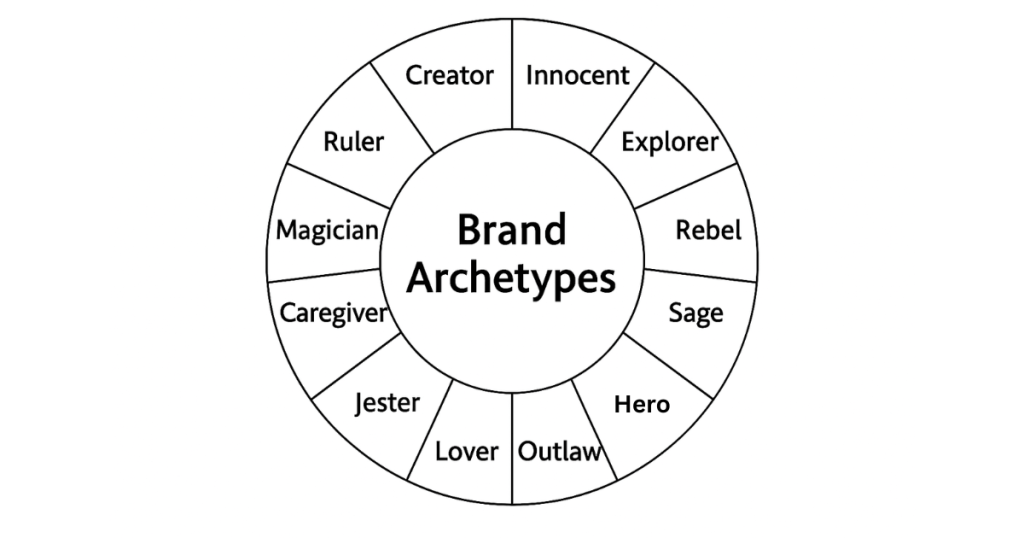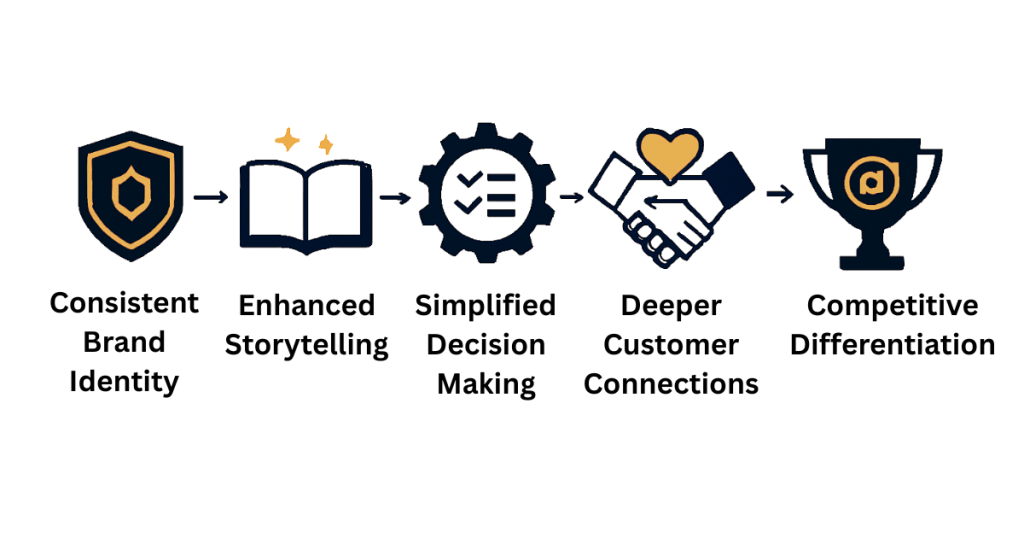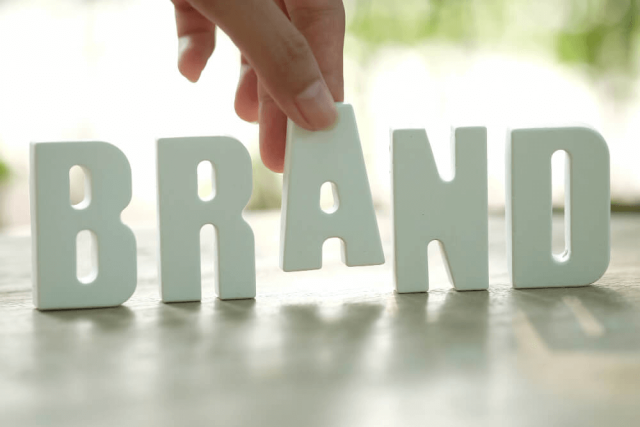Building a memorable brand requires more than a logo and a catchy tagline. The most successful companies tap into something deeper—universal patterns of human behavior that resonate across cultures and generations. These patterns, known as brand archetypes, provide a psychological foundation for creating authentic connections with your audience.
Brand archetypes offer a proven framework for developing a consistent brand identity and compelling storytelling. By understanding these 12 fundamental personality types, businesses can craft marketing strategies that speak directly to their customers’ deepest motivations and desires. Whether you’re launching a startup or repositioning an established company, choosing the right archetype can transform how your audience perceives and engages with your brand.
This guide explores each of the 12 brand archetypes, explains how they shape brand personality, and provides practical steps for implementing them in your marketing strategy.
What is an Archetype in Branding?
Brand archetypes are universal character types rooted in Carl Jung’s theory of the collective unconscious. These psychological patterns represent fundamental human motivations, fears, and desires that transcend cultural boundaries. When applied to branding, archetypes help companies develop authentic personalities that customers instinctively understand and connect with.
Each archetype embodies specific traits, values, and communication styles. They serve as a blueprint for decision-making across all brand touchpoints, from product development to customer service interactions. Rather than being restrictive, these frameworks provide creative direction while ensuring consistency.
The power of archetypal branding lies in its ability to tap into pre-existing emotional associations. When consumers encounter an archetype brand, they quickly understand what it represents and whether it aligns with their personal values and aspirations.
The 12 Brand Archetypes Explained

Understanding each archetype’s core characteristics helps businesses identify which personality best represents their mission and resonates with their target audience.
The Innocent
The Innocent archetype represents purity, optimism, and simplicity. These brands promise safety, happiness, and a return to fundamental goodness. Coca-Cola exemplifies this archetype with its focus on sharing happiness and bringing people together. Innocent brands use clean, simple messaging and avoid controversial topics.
The Explorer
Explorer brands embody freedom, adventure, and self-discovery. They inspire customers to break boundaries and find new experiences. Patagonia perfectly represents this archetype, encouraging outdoor exploration while maintaining authentic values. These brands appeal to individuals seeking authenticity and personal growth.
The Sage
Sage brands position themselves as sources of wisdom and knowledge. They promise to help customers understand the world and make informed decisions. Google embodies the Sage archetype by organizing the world’s information and making it universally accessible. These companies build trust through expertise and transparency.
The Hero
Hero archetypes inspire customers to overcome challenges and achieve greatness. Nike represents this perfectly with its “Just Do It” campaign, motivating people to push their limits. Hero brands appeal to customers’ desire for mastery and accomplishment, often focusing on performance and results.
The Outlaw
Outlaw brands challenge the status quo and rebel against conventional wisdom. Harley-Davidson embodies this archetype by representing freedom from societal constraints. These brands attract customers who feel marginalized by mainstream culture and want to express their individuality.
The Magician
Magician brands promise transformation and make the impossible possible. Apple exemplifies this archetype by creating products that seem to work like magic, transforming how people interact with technology. These companies focus on innovation and helping customers realize their visions.
The Regular Guy/Girl
Also known as the Everyman, this archetype represents authenticity, down-to-earth values, and belonging. Target successfully uses this approach by making quality products accessible to regular families. These brands avoid elitism and focus on genuine connections with everyday people.
The Lover
Lover brands focus on passion, relationships, and emotional connections. Victoria’s Secret built its brand around romance and sensuality, appealing to customers’ desire for intimacy and attraction. These companies emphasize beauty, love, and the importance of relationships.
The Jester
Jester archetypes bring joy, humor, and playfulness to their interactions. Ben & Jerry’s exemplifies this with quirky flavor names and socially conscious humor. These brands help customers have fun and don’t take themselves too seriously, creating memorable experiences through entertainment.
The Caregiver
Caregiver brands focus on service, compassion, and helping others. Johnson & Johnson represents this archetype by positioning itself as a family healthcare company that puts people first. These brands appeal to customers’ nurturing instincts and desire to care for loved ones.
The Ruler
Ruler archetypes represent authority, responsibility, and success. Mercedes-Benz embodies this by positioning its vehicles as symbols of achievement and status. These brands attract customers who want to be in control and project success to others.
The Creator
Creator brands inspire artistic expression and imagination. Lego perfectly represents this archetype by providing tools for unlimited creative possibilities. These companies appeal to customers’ desire for self-expression and the satisfaction of building something unique.
How to Define Your Brand Archetype
Selecting the right archetype requires honest evaluation of your company’s core values, mission, and target audience. Start by examining your brand’s fundamental purpose beyond making a profit. What deeper human need does your product or service fulfill?
Consider your customers’ primary motivations and pain points. Are they seeking security, adventure, knowledge, or recognition? The archetype that best addresses these needs will create the strongest emotional connection.
Evaluate your competitive landscape to ensure differentiation. While multiple companies might share similar archetypes, each should express its personality uniquely. Your chosen archetype should feel authentic to your organization’s culture and be sustainable long-term.
Test your archetype choice against real customer feedback. Conduct surveys or focus groups to understand how your current brand personality is perceived and whether it aligns with your intended archetype.
Benefits of Using Brand Archetypes in Marketing Strategy

Brand archetypes provide numerous advantages for developing cohesive marketing strategies and building lasting customer relationships.
Consistent Brand Identity
Archetypes create a unified framework for all brand communications. Every piece of content, advertisement, and customer interaction can be filtered through your chosen archetype, ensuring consistency across all touchpoints. This coherence helps customers develop clear expectations and stronger brand recognition.
Enhanced Storytelling
Archetypal frameworks provide rich material for compelling brand narratives. Each archetype comes with established story patterns that audiences instinctively understand. This makes it easier to create engaging content that resonates emotionally with your target market.
Simplified Decision Making
When faced with marketing decisions, archetypes serve as a guiding principle. Teams can ask whether a particular campaign, message, or partnership aligns with their brand personality. This clarity speeds up decision-making processes and reduces inconsistencies.
Deeper Customer Connections
Archetypes tap into universal human psychology, creating emotional bonds that go beyond functional benefits. Customers who identify with your brand archetype become more loyal and are more likely to recommend your products to others.
Competitive Differentiation
In crowded markets, archetype-driven branding helps companies stand out by developing distinctive personalities. Rather than competing solely on features or price, brands can differentiate through emotional positioning and values alignment.
Implementing Your Chosen Archetype
Successfully implementing brand archetypes requires systematic application across all business functions. Start by documenting your archetype’s key characteristics, values, and communication style in a comprehensive brand guide.
Train your team on how the archetype influences their specific roles. Customer service representatives should understand how to embody your brand personality in every interaction. Marketing teams need clear guidelines for tone, messaging, and visual representation.
Audit existing brand materials to identify areas needing adjustment. Website copy, social media profiles, advertising campaigns, and product packaging should all reflect your chosen archetype consistently.
Monitor customer feedback and brand perception regularly. Use social media listening tools and customer surveys to track how well your archetype implementation resonates with your target audience.
Building Authentic Brand Connections
Brand archetypes offer a powerful framework for creating meaningful connections with customers through authentic personality expression. By understanding the 12 archetypal patterns and selecting the one that best represents your company’s core values, you can develop more consistent, compelling marketing strategies.
Remember that choosing an archetype is just the beginning. Success comes from authentic, consistent implementation across all brand touchpoints. Start by evaluating which archetype best represents your brand’s true personality, then systematically apply this framework to strengthen your brand identity and deepen customer relationships.




